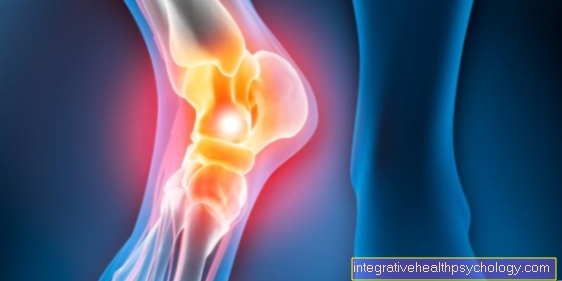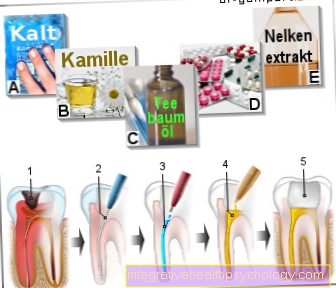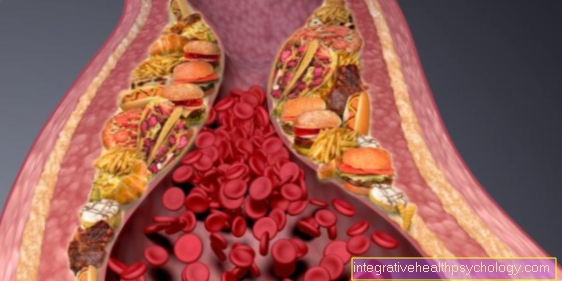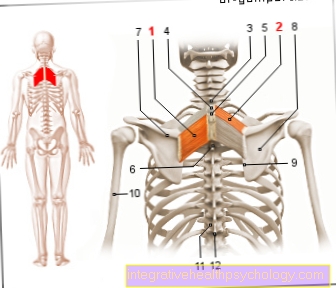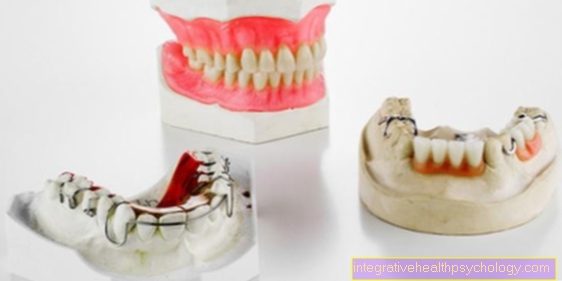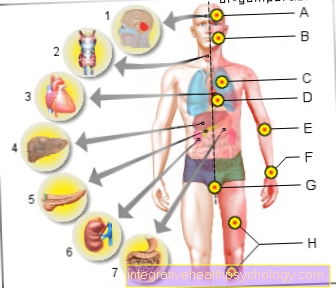Carboxypeptidase
definition
Carboxypeptidases are enzymes that split off amino acids from proteins or peptides. Proteins are long chains made up of different amino acids. Peptides are also made up of amino acids but are shorter. The basic structure of the amino acids is always the same. It is important that the connection between a carbon atom and a nitrogen atom is established.
You can visualize it like a human chain, the right hand is the carbon atom and the left hand is the nitrogen atom. One of the atoms remains free at each end of the chain. Carboxypeptidases split off the last amino acid at the end of the protein where the carbon atom remains free. It is referred to as the so-called C-terminal end.
Since the enzyme can only cleave at the ends, it is called an exopeptidase. On the one hand, the carboxypeptidases are involved in the breakdown of the ingested food; on the other hand, they also modify newly produced proteins and bring them into their functional state.

Which carboxypeptidases are there?
One can subdivide carboxypeptidases according to different systems. A system divides the carboxypeptidases according to which amino acids they preferentially split off. In this system, the carboxypeptidases are divided into several groups, which are designated with letters. The best known groups are groups A and B.
The group A carboxypeptidases split off the amino acids that have a branched structure and those that have an aromatic ring. This is a special structure that consists of carbon atoms and has special properties.
The group B carboxypeptidases preferentially split off amino acids that are positively charged.
The other system for classifying the carboxypeptidases divides the enzymes according to the nature of their active center. The active center denotes the place on the enzyme where the reaction takes place.In the case of carboxypeptidases, a distinction is made between the metallo-carboxypeptidases, in which there is a metal molecule in the active center, the thiol-carboxypeptidases, with the amino acid cysteine in the active center, and the serine-carboxypeptidases, in which the amino acid serine is in the active center. However, the various active centers do not determine which amino acid is split off.
The class of serine carboxypeptidases consists of the three enzymes: Trypsin, chymotrypsin, elastase.
Task, function and effect
The tasks of the various carboxypeptidases are very diverse. While the carboxypeptidases that were first discovered play a role in digestion, most of the carboxypeptidases known today are important for other processes.
The task of the carboxypeptidases during digestion is to break down the proteins into the individual amino acids. This process is very important because no proteins are absorbed in the intestine, only the individual amino acids.
Carboxypeptidases are indispensable in the maturation process of various proteins. In order for proteins to be fully functional after their production, various modifications have to be made. For example, individual amino acids are split off by the carboxypeptidases. However, this modification does not take place solely through carboxypeptidases, but in interaction with other enzymes. Furthermore, carboxypeptidases are involved in the production of various peptides.
A particularly important peptide is insulin. Various carboxypeptidases are also involved in the production of insulin.
Where is it made?
The part of the carboxypeptidases that is involved in digestion is produced in the pancreas. The pancreas, also called the pancreas, produces pancreatic secretions that are released directly into the small intestine. This secretion is very rich in enzymes. It also neutralizes the acidic stomach contents. This secretion contains carboxypeptidases that were previously produced in the pancreas.
For more detailed information on what the pancreas does, read our article: Function of the pancreas
What happens in the event of a deficiency?
If there is a shortage of carboxypeptidases, the process affected in each case should theoretically be restricted. However, not much is known about the effects of a lack of carboxypeptidases, which are involved in digestion. Presumably, the cleavage of proteins can be sustained, since if one carboxypeptidase is deficient, another can take over.
The enzymes preferentially split off the respective amino acids, but they can also split off the amino acids that do not perfectly fit their group. However, there is one disease that is based on a deficiency in carboxypeptidase N. In this disease, the immune system is disturbed because this enzyme is involved in the defense against disease.

